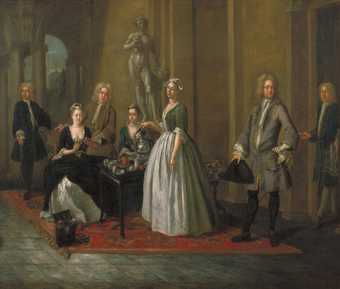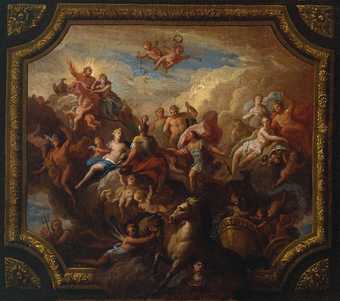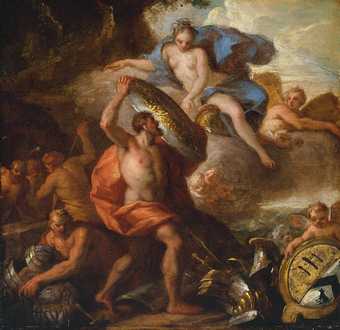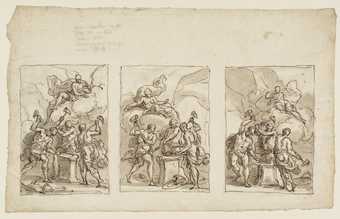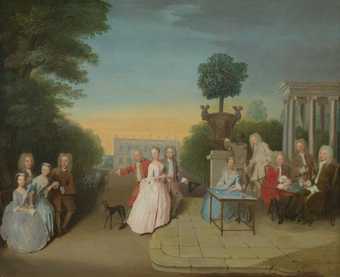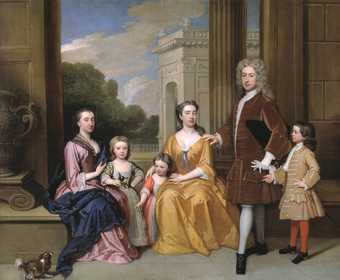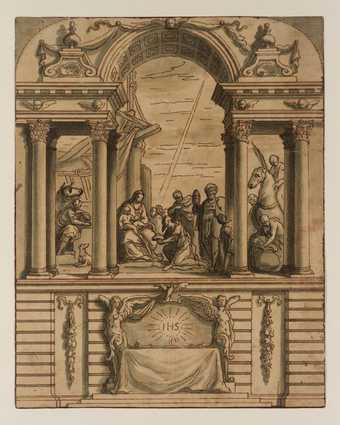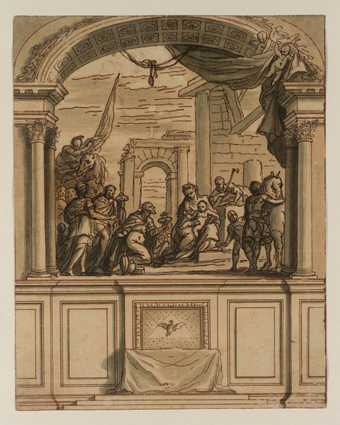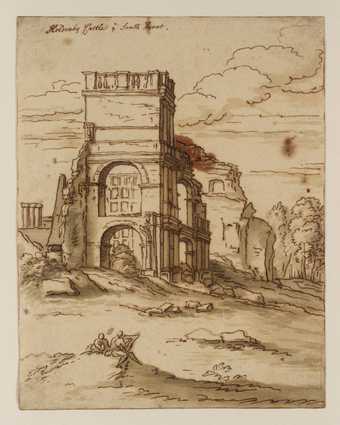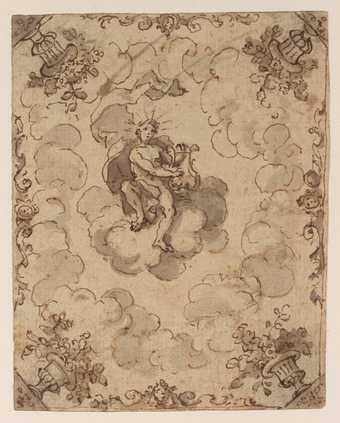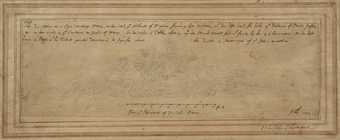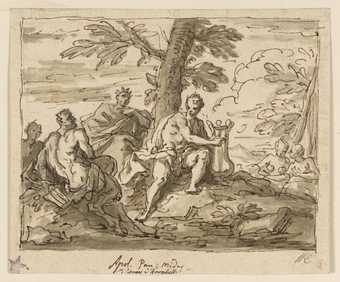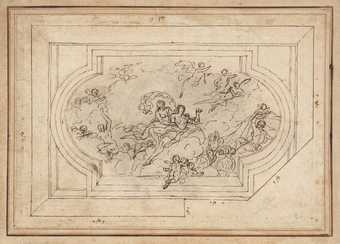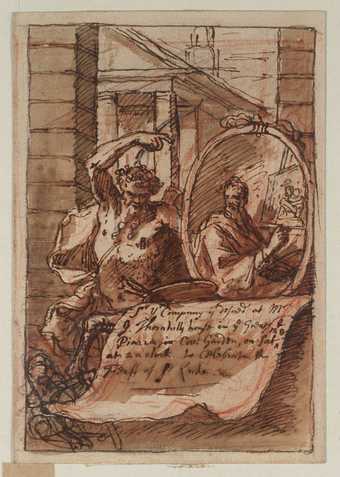Sorry, copyright restrictions prevent us from showing this object here
Not on display
- Artist
- Sir James Thornhill 1675 or 76–1734
- Medium
- Oil paint on canvas
- Dimensions
- Support: 820 × 737 mm
- Collection
- Lent by the Dean and Chapter of St Pauls Cathedral 1989
On long term loan - Reference
- L01480
Summary
This sketch, along with St Paul before Sergius Paulus (Tate L01481) and another, St Paul before Agrippa (Yale Center for British Art), are early designs for Thornhill's cycle of the life of St Paul which decorates the dome of St Paul's Cathedral in London. Thornhill did not officially win the commission until 1715, but had entered the public competition for the project announced as far back as 1709 (see Tate L01481). This sketch could date to that year, or perhaps 1710 when Thornhill was shortlisted with the Venetian artist, Pellegrini (1675-1741), and asked to submit further designs. The 1709 competition had stipulated painted figurative decoration with themes taken from the New Testament Acts of the Apostles. Thornhill elected to concentrate on the life of St Paul, dividing the dome into eight segments divided by illusionist architecural decoration - the simple coffering chosen here was in fact supplanted by a much more elaborate design.
As is the case with Tate L01481, this early proposal for Paul preaching at Athens bears little resemblance to what was actually executed on the dome (see Tate L01486) and is heavily dependent on Raphael's (1483-1520) tapestry cartoon (circa 1514-16) of the same subject then hanging at Hampton Court (now Victoria and Albert Museum, London). In the early eighteenth century Raphael's cartoons were held as supreme examples of a classically disciplined style and as benchmarks of acceptable scriptural representation. Raphael was admired for the clarity of his composition and for his judicious use of gesture and expression to convey the meaning of the narrative. In his Theory of Painting (1715) the portraitist and art theorist Jonathan Richardson (1667-1745) found much to praise in the cartoons, particularly Paul Preaching at Athens. 'There I see a Person, Face, Air, and Action, which no Words can sufficiently describe, but which assure me that that Man must speak good Sense', he wrote, 'And the different Sentiments of his Auditors are as finely express'd; Some appear to be Angry Others to be Attentive, and reasoning upon the matter within themselves, or with one another; and One especially is apparently Convinc'd'.
For many reasons, therefore, Thornhill found the Raphael cartoons worthy models to emulate. This composition is based on Raphael's, with Paul to the left, arms outstretched as he preaches to the multitude gathered below. The gesture of the figure seated on the far right has been copied directly, his hand raised with fingers outstretched as he attends to the wisdom of Paul's words. Later in his career, from 1729 to 1731, Thornhill embarked on the self-appointed task of copying the cartoons. As well as sets of copies, he also made numerous studies of heads, hands and feet intended to be published as an instructional drawing manual for artists.
Further reading:
Arline Meyer, Sir James Thornhill and the Legacy of Raphael's Tapestry Cartoons, exhibition catalogue, Miriam and Ira D. Wallach Art Gallery, Columbia University in the City of New York, 1996
Carol Gibson-Wood, 'The Political Background to Thornhill's Paintings in St Paul's Cathedral', Journal of the Warburg and Courtauld Institutes, vol. 56, 1993, pp.229-37
Edward Croft-Murray, Decorative Painting in England 1537-1837, I, London 1962, pp.71-4 and 271b
Tabitha Barber
February 2001
Does this text contain inaccurate information or language that you feel we should improve or change? We would like to hear from you.
Display caption
This is a sketch for one of a series of paintings for the dome of St Paul’s Cathedral, London. Because it was for an Anglican cathedral its patrons did not want it to be too dynamic or colourful, as would have been typical in Catholic Italy. So a British, Protestant artist was chosen. What does the resulting design suggest about how ‘history’ painting needed to be changed to suit British tastes?
Gallery label, March 2011
Does this text contain inaccurate information or language that you feel we should improve or change? We would like to hear from you.
Explore
- architecture(30,960)
- periods and styles(5,198)
-
- classical(1,040)
- religious(6,862)
-
- temple(344)
- group(4,227)
- countries and continents(17,390)
-
- Greece(85)
- Athens(2)
You might like
-
Joseph Van Aken An English Family at Tea
c.1720 -
Sir James Thornhill The Apotheosis of Romulus: Sketch for a Ceiling Decoration, Possibly for Hewell Grange, Worcestershire
c.1710 -
Sir James Thornhill Thetis Accepting the Shield of Achilles from Vulcan
c.1710 -
Sir James Thornhill Three Studies for ‘Thetis in the Forge of Vulcan Watching the Making of Achilles’ Armour’
c.1710 -
Philip Mercier The Schutz Family and their Friends on a Terrace
1725 -
Sir Godfrey Kneller The Harvey Family
1721 -
Sir James Thornhill Architectural Decoration, Design for an Altarpiece: Scene under a Barrel Vault Supported by Four Pairs of Detached Columns
date not known -
Sir James Thornhill Architectural Decoration, Design for an Altarpiece: Scene under a Wide Vault Supported by Two Pairs of Columns
date not known -
Sir James Thornhill Holdenby Castle ye South Front
date not known -
Sir James Thornhill Apollo: Design for a Ceiling
date not known -
Sir James Thornhill Design for the Pediment of Queen’s College, Oxford
1716 -
Sir James Thornhill Apollo, Pan, Midas. A Decoration
date not known -
Sir James Thornhill Design for a Ceiling with Curved Ends. Verso: Numerous Designs for the Central Motif
date not known -
Sir James Thornhill Invitation Card for the Feast of St Luke, with a Sketch of the Pediment of a Greek Temple
1718

